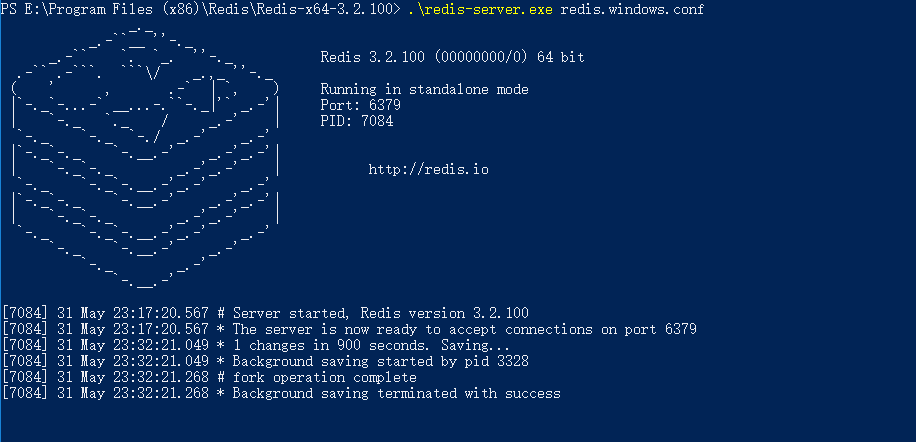10.11 【并发编程】实战异步IO框架:asyncio 下篇¶
1. 动态添加协程¶
在实战之前,我们要先了解下在asyncio中如何将协程态添加到事件循环中的。这是前提。
如何实现呢,有两种方法: - 主线程是同步的
import time
import asyncio
from queue import Queue
from threading import Thread
def start_loop(loop):
# 一个在后台永远运行的事件循环
asyncio.set_event_loop(loop)
loop.run_forever()
def do_sleep(x, queue, msg=""):
time.sleep(x)
queue.put(msg)
queue = Queue()
new_loop = asyncio.new_event_loop()
# 定义一个线程,并传入一个事件循环对象
t = Thread(target=start_loop, args=(new_loop,))
t.start()
print(time.ctime())
# 动态添加两个协程
# 这种方法,在主线程是同步的
new_loop.call_soon_threadsafe(do_sleep, 6, queue, "第一个")
new_loop.call_soon_threadsafe(do_sleep, 3, queue, "第二个")
while True:
msg = queue.get()
print("{} 协程运行完..".format(msg))
print(time.ctime())
由于是同步的,所以总共耗时6+3=9秒.
输出结果
Thu May 31 22:11:16 2018
第一个 协程运行完..
Thu May 31 22:11:22 2018
第二个 协程运行完..
Thu May 31 22:11:25 2018
主线程是异步的,这是重点,一定要掌握。。
import time
import asyncio
from queue import Queue
from threading import Thread
def start_loop(loop):
# 一个在后台永远运行的事件循环
asyncio.set_event_loop(loop)
loop.run_forever()
async def do_sleep(x, queue, msg=""):
await asyncio.sleep(x)
queue.put(msg)
queue = Queue()
new_loop = asyncio.new_event_loop()
# 定义一个线程,并传入一个事件循环对象
t = Thread(target=start_loop, args=(new_loop,))
t.start()
print(time.ctime())
# 动态添加两个协程
# 这种方法,在主线程是异步的
asyncio.run_coroutine_threadsafe(do_sleep(6, queue, "第一个"), new_loop)
asyncio.run_coroutine_threadsafe(do_sleep(3, queue, "第二个"), new_loop)
while True:
msg = queue.get()
print("{} 协程运行完..".format(msg))
print(time.ctime())
输出结果
由于是异步的,所以总共耗时max(6, 3)=6秒
Thu May 31 22:23:35 2018
第二个 协程运行完..
Thu May 31 22:23:38 2018
第一个 协程运行完..
Thu May 31 22:23:41 2018
2. 利用redis实现动态添加任务¶
对于并发任务,通常是用生成消费模型,对队列的处理可以使用类似master-worker的方式,master主要用户获取队列的msg,worker用户处理消息。
为了简单起见,并且协程更适合单线程的方式,我们的主线程用来监听队列,子线程用于处理队列。这里使用redis的队列。主线程中有一个是无限循环,用户消费队列。
先安装Redis 到 https://github.com/MicrosoftArchive/redis/releases 下载
 解压到你的路径。
解压到你的路径。 
然后,在当前路径运行cmd,运行redis的服务端。  服务开启后,我们就可以运行我们的客户端了。
并依次输入key=queue,value=5,3,1的消息。
服务开启后,我们就可以运行我们的客户端了。
并依次输入key=queue,value=5,3,1的消息。 
一切准备就绪之后,我们就可以运行我们的代码了。
import time
import redis
import asyncio
from queue import Queue
from threading import Thread
def start_loop(loop):
# 一个在后台永远运行的事件循环
asyncio.set_event_loop(loop)
loop.run_forever()
async def do_sleep(x, queue):
await asyncio.sleep(x)
queue.put("ok")
def get_redis():
connection_pool = redis.ConnectionPool(host='127.0.0.1', db=0)
return redis.Redis(connection_pool=connection_pool)
def consumer():
while True:
task = rcon.rpop("queue")
if not task:
time.sleep(1)
continue
asyncio.run_coroutine_threadsafe(do_sleep(int(task), queue), new_loop)
if __name__ == '__main__':
print(time.ctime())
new_loop = asyncio.new_event_loop()
# 定义一个线程,运行一个事件循环对象,用于实时接收新任务
loop_thread = Thread(target=start_loop, args=(new_loop,))
loop_thread.setDaemon(True)
loop_thread.start()
# 创建redis连接
rcon = get_redis()
queue = Queue()
# 子线程:用于消费队列消息,并实时往事件对象容器中添加新任务
consumer_thread = Thread(target=consumer)
consumer_thread.setDaemon(True)
consumer_thread.start()
while True:
msg = queue.get()
print("协程运行完..")
print("当前时间:", time.ctime())
稍微讲下代码
loop_thread:单独的线程,运行着一个事件对象容器,用于实时接收新任务。
consumer_thread:单独的线程,实时接收来自Redis的消息队列,并实时往事件对象容器中添加新任务。
输出结果
Thu May 31 23:42:48 2018
协程运行完..
当前时间: Thu May 31 23:42:49 2018
协程运行完..
当前时间: Thu May 31 23:42:51 2018
协程运行完..
当前时间: Thu May 31 23:42:53 2018
我们在Redis,分别发起了5s,3s,1s的任务。 从结果来看,这三个任务,确实是并发执行的,1s的任务最先结束,三个任务完成总耗时5s
运行后,程序是一直运行在后台的,我们每一次在Redis中输入新值,都会触发新任务的执行。。